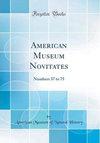白垩纪残属Alavesia Waters和Arillo的多样性(双翅目:翅甲总科:翅甲科)
IF 1.1
3区 环境科学与生态学
Q3 BIODIVERSITY CONSERVATION
引用次数: 5
摘要
摘要阿拉维西亚是根据西班牙和缅甸晚白垩世琥珀中的五个物种和纳米比亚现存的两个物种而发现的。最近,在巴西南部发现了另一种现存物种。在这里,我们展示了来自缅甸白垩纪中期(晚阿尔比阶-早Cenomanian阶,约99 Ma)的Alavesia蝇的惊人多样性,包括九个新种:a.angusta,sp.nov.,a.brevipennae,sp.nova.,a.lanceolata,sp.nov,a.latala,sp.nv.,a.longiconuta,sp.nov.,a.magna,sp.niv.,a.pankowskiorum,sp.nv..,a.spinosa,sp.nev.和a.zigrasi,sp.nav。提出了以下新的同义词:Neoalavesia Poinar和Vega,2020=Alavesia Waters和Arillo,1999。提供了关于一种不寻常结构的注释,在不同物种的股骨上发现了不同程度的腿沟,有时在胫骨上,以及关于群集行为的注释。Alavesia已经经历了大范围的灭绝,这一发现进一步支持了该属的残余性质,并有助于解释在南温带和北温带发现的Atelestidae最近的其他四个属的分布。简要回顾了缅甸琥珀中保存的节肢动物遗迹分类群,这些分类群也是当今温带地区的特有种。本文章由计算机程序翻译,如有差异,请以英文原文为准。
Cretaceous Diversity of the Relict Genus Alavesia Waters and Arillo (Diptera: Empidoidea: Atelestidae)
ABSTRACT Alavesia has been known on the basis of five species in Late Cretaceous amber from Spain and Myanmar and two extant species from Namibia. Very recently, another extant species has been found in southern Brazil. Here we present a surprising diversity of Alavesia flies from the mid-Cretaceous of Myanmar (Late Albian-Early Cenomanian, ca. 99 Ma), including nine new species: A. angusta, sp. nov., A. brevipennae, sp. nov., A. lanceolata, sp. nov., A. latala, sp. nov., A. longicornuta, sp. nov., A. magna, sp. nov., A. pankowskiorum, sp. nov., A. spinosa, sp. nov., and A. zigrasi, sp. nov. The following new synonymy is proposed: Neoalavesia Poinar and Vega, 2020 = Alavesia Waters and Arillo, 1999. Notes are provided on an unusual structure, leg furrows found on femora to varying degrees among species, sometimes on tibiae, as well as notes on swarming behavior. Alavesia has undergone extensive extinction, a finding that further supports the relict nature of this genus and helps to explain the distribution of the other four Recent genera of Atelestidae, found in south and north temperate regions. Relict arthropod taxa preserved in Burmese amber are briefly reviewed, which also are narrowly endemic to temperate regions today.
求助全文
通过发布文献求助,成功后即可免费获取论文全文。
去求助
来源期刊

American Museum Novitates
环境科学-动物学
CiteScore
3.00
自引率
6.70%
发文量
8
审稿时长
>36 weeks
期刊介绍:
The Novitates (Latin for "new acquaintances"), published continuously and numbered consecutively since 1921, are short papers that contain descriptions of new forms and reports in zoology, paleontology, and geology.
 求助内容:
求助内容: 应助结果提醒方式:
应助结果提醒方式:


